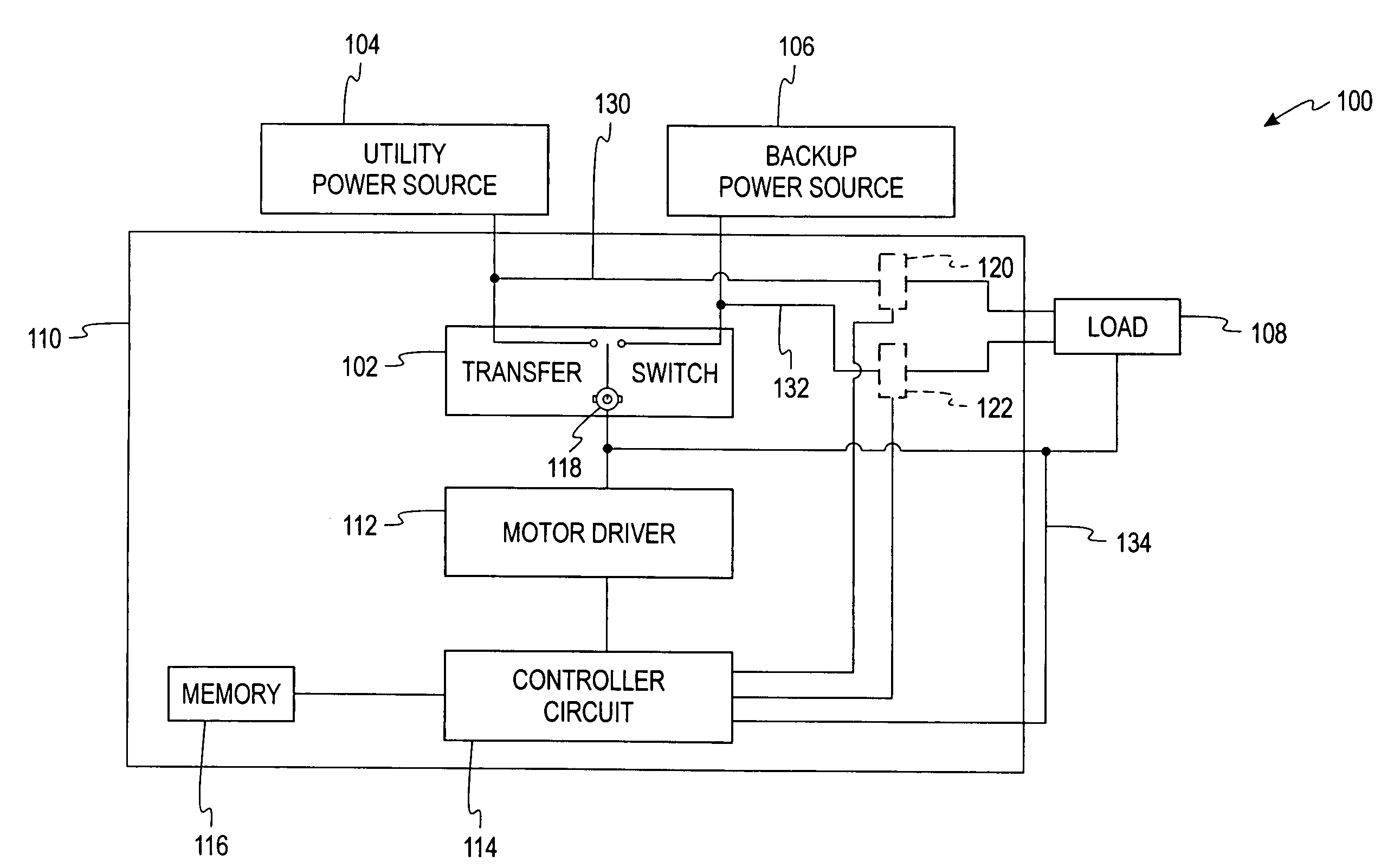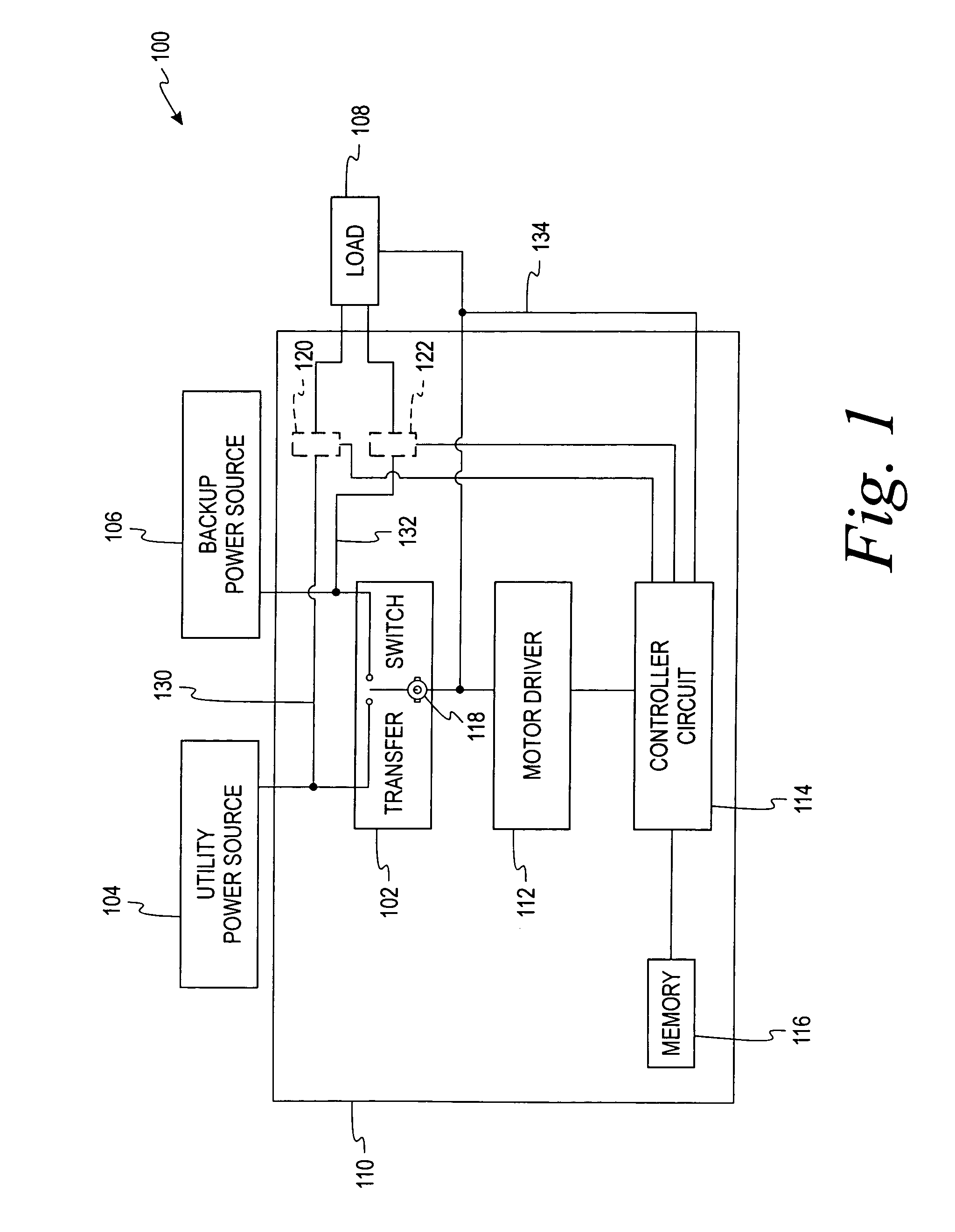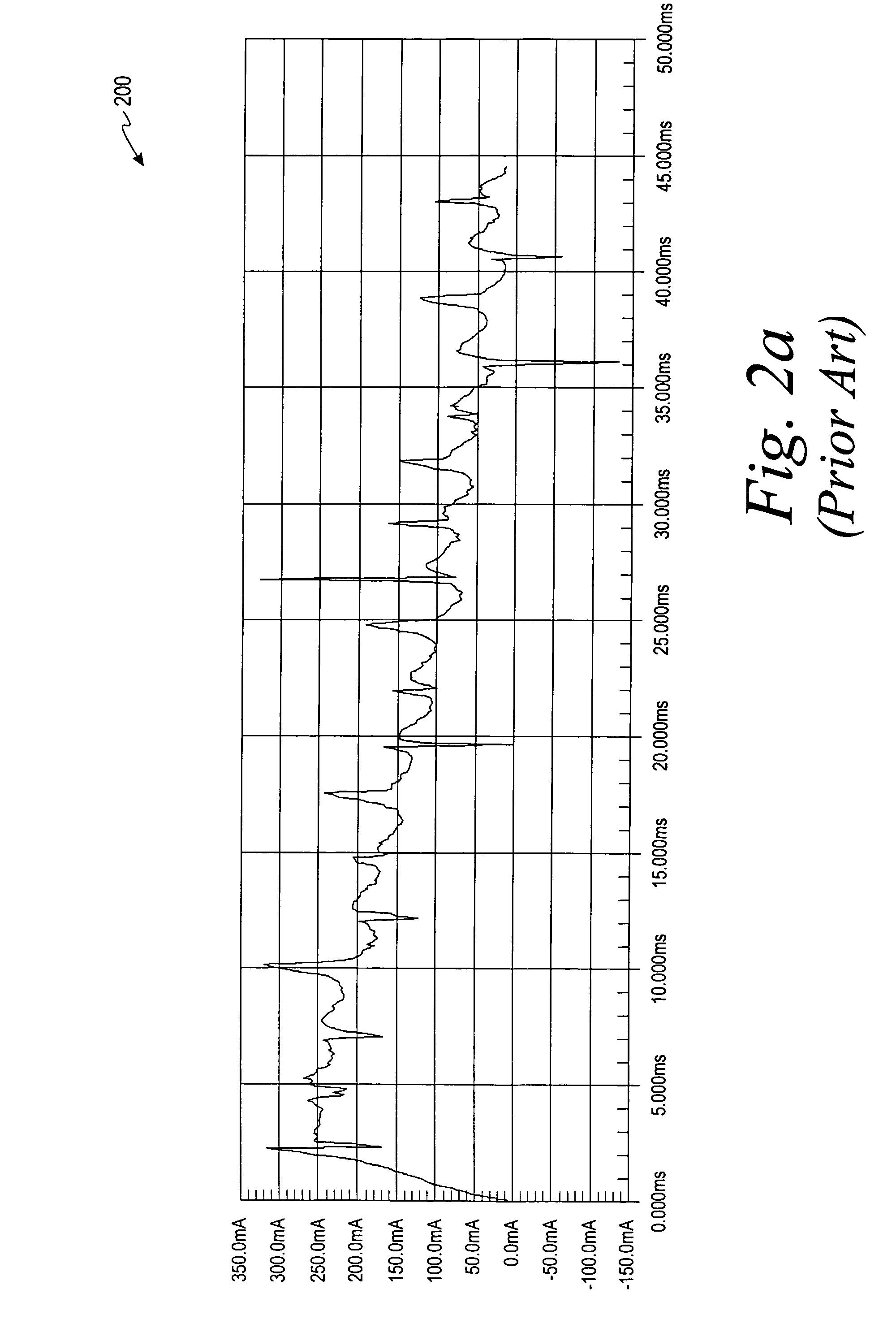Contact verification method for a transfer switch mechanism
a transfer switch and verification method technology, applied in the field of switches, can solve problems such as motor damage, system failure to operate, and gearbox damage, and achieve the effect of removing high-frequency nois
- Summary
- Abstract
- Description
- Claims
- Application Information
AI Technical Summary
Benefits of technology
Problems solved by technology
Method used
Image
Examples
Embodiment Construction
[0073]Although the invention will be described in connection with certain preferred embodiments, it will be understood that the invention is not limited to those particular embodiments. On the contrary, the invention is intended to include all alternatives, modifications and equivalent arrangements as may be included within the spirit and scope of the invention as defined by the appended claims.
[0074]Referring now to the drawings and initially to FIG. 1, a functional block diagram of a system 100 for controlling an automatic transfer switch mechanism 102 according to an aspect of the present invention. The transfer switch mechanism 102 allows electrical power to flow from a utility (main) power source 104 or a backup power source 106 (such as a generator) to a load 108. An automatic transfer switch mechanism with a manual override suitable for use with aspects of the present invention is disclosed in U.S. patent application Publication No. 2006 / 0131146, entitled “Switching Mechanism...
PUM
 Login to View More
Login to View More Abstract
Description
Claims
Application Information
 Login to View More
Login to View More - R&D
- Intellectual Property
- Life Sciences
- Materials
- Tech Scout
- Unparalleled Data Quality
- Higher Quality Content
- 60% Fewer Hallucinations
Browse by: Latest US Patents, China's latest patents, Technical Efficacy Thesaurus, Application Domain, Technology Topic, Popular Technical Reports.
© 2025 PatSnap. All rights reserved.Legal|Privacy policy|Modern Slavery Act Transparency Statement|Sitemap|About US| Contact US: help@patsnap.com



